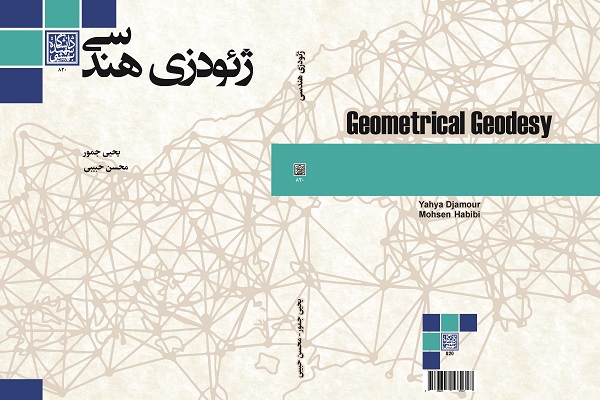
The book “Geometrical Geodesy” authored in Persian by Dr. Yahya Djamour, associate professor of the Faculty of Civil, Water and Environmental Engineering of Shahid Beheshti University and Mohsen Habibi has been published recently by SBU Press in 214 pages.
Determining the position of the points and features of the earth's surface in a coordinate reference system and the base reference level close to the real shape of the earth is one of the serious concerns and needs of mankind in most projects. For this reason, from the distant past until now, many two-axis rotational ellipses, such as the WGS84 reference ellipsoid, have been introduced as reference base levels for calculating the positions and displaying features on them.
The ability and understanding of how to perform positioning and accounting calculations on reference ellipses and converting them to each other are necessary skills for mapping engineers. In addition to that and for different reasons, including the simplicity of performing calculations or interpreting the earth's physical phenomena, presenting the coordinates of points in geodetic and Cartesian formats and converting them to each other are considered the daily needs of engineers and other earth science specialists. On the other hand, converting the coordinates of points and features from the three-dimensional process of reference ellipses to a suitable two-dimensional plane known as the image system, such as UTM, and vice versa is necessary in many mapping projects, especially the preparation of national standard maps. Therefore, in the present book, the authors have attempted to provide appropriate responses to the mentioned needs in eight chapters, based on the outline of the course “geometric geodesy” in the field of mapping engineering, approved by the Iranian Ministry of Science, Research and Technology, in addition to paying attention to the concepts and the mathematical and theoretical foundations of the subject. Considering the importance of some chapters, the authors have included useful and important questions at the end of the chapters, so that by answering them students and interested researchers can assess their understanding and perception of the stated content.


